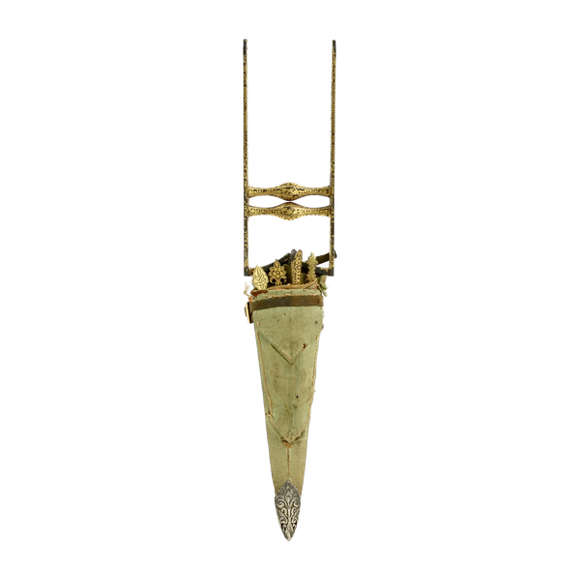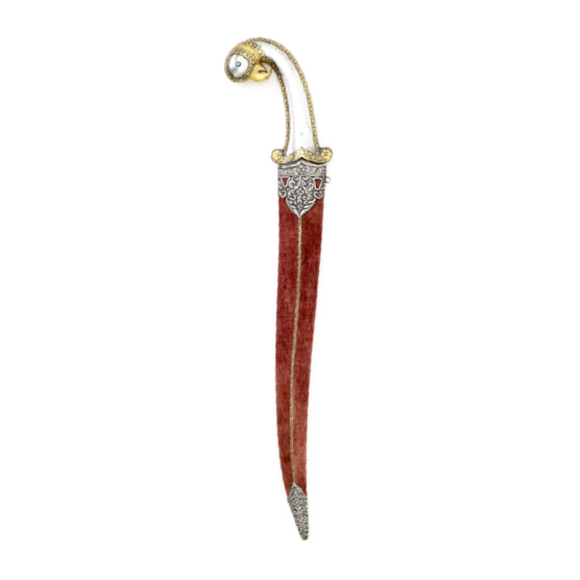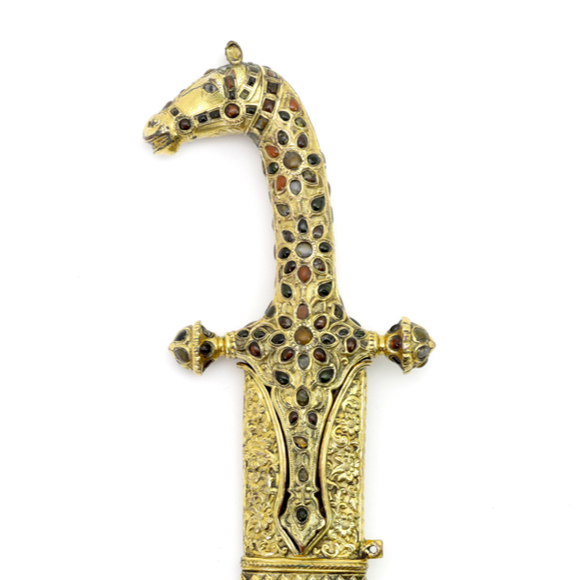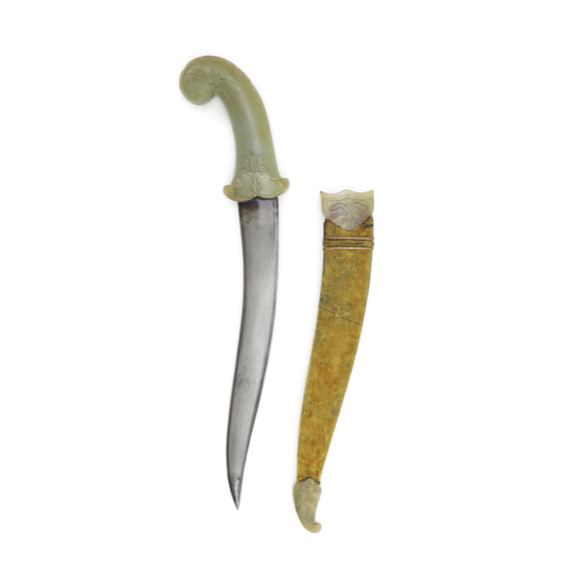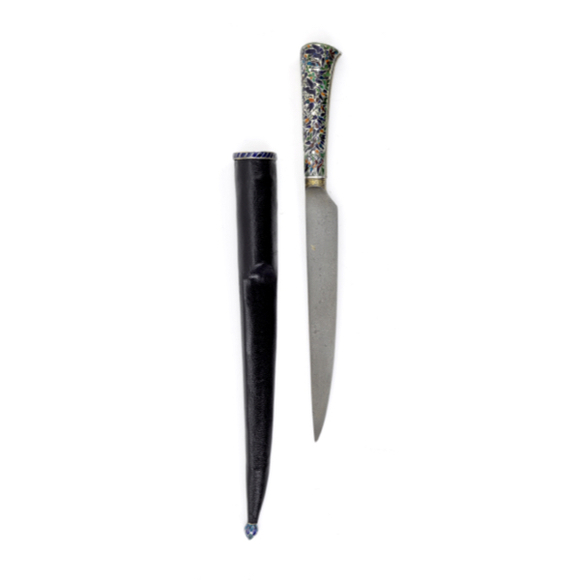With a fine wootz blade with a pronounced center ridge.

88.2 cm
69 cm
1109 grams
17.5 cm from guard
Iron, steel, gold, silk fabric
North India
Early 19th century
Description
A north Indian khanda sword. Its broad blade widens from the base upwards, to form a triangular point at the very tip. It is etched with a pattern resembling patterned steel, but other than pattern welding or wootz where the patterning is in the steel, this is a pattern that appears to have been achieved by selective etching only.
The blade is reinforced by steel strips on both sides, the edge side for about 1/3rd of the blade, the spine side extending 4/5th of the blade, ending just before a short backedge.
It is hilted in a typical khanda hilt, also known as the "Hindu basket hilt" with a wide hand guard and a long spike at the back for occasional two-handed use.
Blade reinforcements and hilt are both decorated with koftgari, consisting of thin lines forming flowers and other floral elements. Also seen on the reinforcements are two makara.
Dating
A very similar piece was published in Contribution A L'Etude Des Armes Orientales by Holstein, published in 1931. It has a near-identical blade with a similar etched surface. This piece is inscribed with the year 1222, corresponding to 1808 A.D.1

Notes
P. Holstein; Contribution A L'Etude Des Armes Orientales. Albert Levy, Paris, 1931. Volume II, page 16 & Plate III.















The style typical of Kutch, the execution far above what is normally seen on work from that area.
Nice and complete with opaque green hilt and scabbard mounts.
With designs of animals, often attributed to Lucknow, north India.

